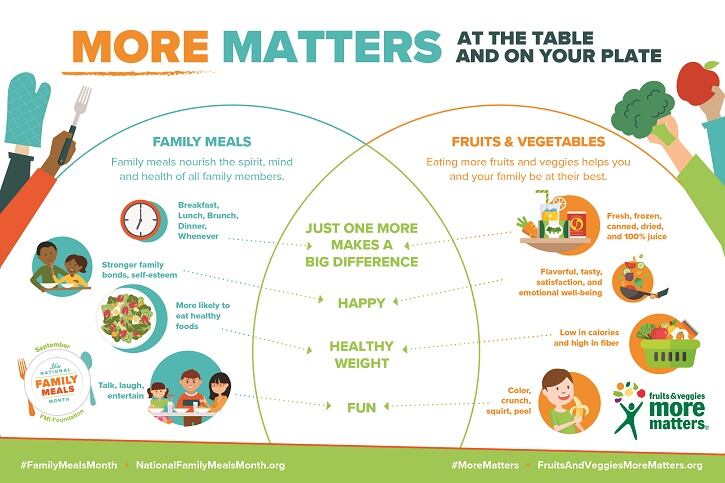The promotion focuses on the idea that “just one more meal” at home together per week is proven to boost the health and wellness of children, help fight obesity and substance abuse and make families stronger, according to FMI.
With the focus on returning to work and back-to-school, “September is the perfect month to spotlight the long-term benefits of family meals, and start a conversation that encourages and inspires people to return to the kitchen to enjoy wholesome meals together,” FMI explains on the initiative’s website.
And of course, the more meals Americans eat at home, the more products they will buy from FMI’s membership.
In the four years since FMI launched National Family Meals Month, it says it has witnessed “lightening-speed growth” with a whopping 84% of Americans who saw the campaign taking action to eat together at home as a family.
According to a Nielsen Harris poll of more than 2,000 Americans, awareness of the campaign has climbed to 15 million households in 2017, inspiring 42% of consumers to cook more meals at home, 36% to eat together more often as a family, 36% to make healthier food choices and 35% to purchase more fruits and vegetables.
Overcoming obstacles
Despite these advances, the campaign still has a long way to go given 63% of consumers across every generation believes eating at home with their family is important, yet only 30% actually share dinner every night. And on average, Americans only eat eight meals with family, which breaks down to about two breakfasts, two lunches and four dinners. Among those meals, only three dinners are at home.
According to the poll, the main reasons that households don’t eat together more often is because they have different schedules, they don’t have enough energy or are too tired, they don’t have time to prepare meals or there are too many distractions, such as television, social media and homework.
To help consumers overcome these obstacles, participants in the campaign are employing different strategies. For example, some retailers are partnering with dietitians to create easy recipes that are affordable while others offer meal kits for faster meal solutions.

